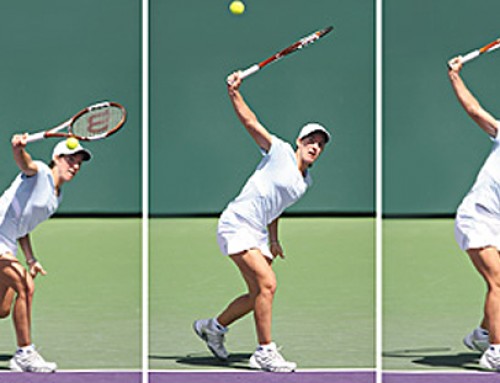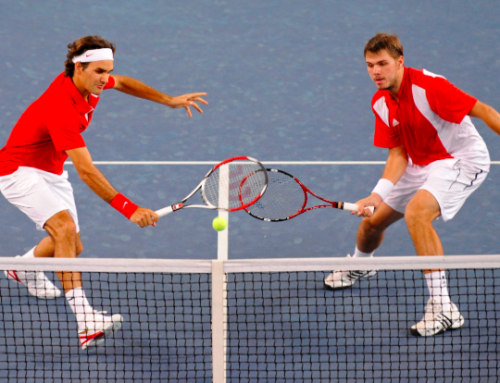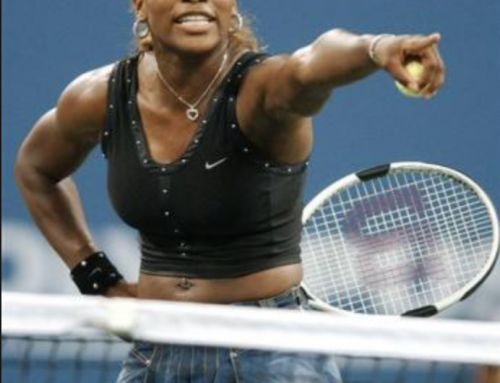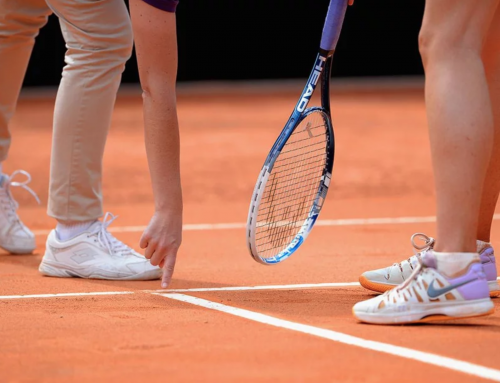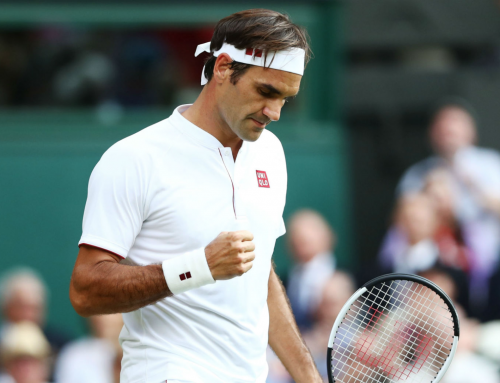Ready to make this year your best ever on the court?
If so keep this quote in mind:
“We cannot become what we need to be by remaining what we are.” -Max Depree
The biggest reason why we get stuck in a rut in all areas of life is we get comfortable, complacent, and stop pushing our boundaries.
And so, I’ve created a “Top 10” list of things that you should be doing in the coming 12 months to break free of the status quo and maximize your improvement.
Most amateur tennis players don’t do ANY of these things…
The very fact that you’re reading this message means you’re probably already doing one or two…
But by adding a couple more to your habits and routines you can propel your results up to the next level quickly!
Ready??
Let’s jump right into the first five, starting from the bottom:
10. Give yourself freedom to “experiment”. Read the following words carefully: you can only make substantial improvements to your technique by doing something DIFFERENT than your current habits! Breaking our VIP students away from what feels “right” to them is one of our biggest tasks as coaches. We all want to hold on to those familiar strokes with all our might because they bring reliable results….but that will keep us stuck at the same level! And so, I’m constantly asking students to do crazy “experiments” on the court, and purposefully hit the ball into the bottom of the net, or into the side curtain, or maybe miss the ball all together. When you’re playing a match you obviously want to use what you know will work….but when you work on technique let go of your need to make every shot, and give yourself freedom to experiment!
9. Take shadow swings seriously. This goes hand-in-hand with number ten. The BEST way to feel what its like to do something different than you’re used to is to take out the ball completely. That’s what shadows swings are for – building awareness of what a better technique is like without all of the worry about where the ball will go! As long as the ball is there we’ll work hard to try and make it do what we want, no matter how hard we try to not care. So take the ball out of the equation, go slow, be patient, and FEEL what a new movement is like while visually watching how your body and the racquet are moving. This is always where we start with VIP students when making a big change…
8. Log your practice sessions. If you take improvement seriously then it’s a given that you’re spending time on the court engaging in “deliberate practice”. No points, no opponents, just you and a deep focus on what you’re doing every single repetition. What really takes things to the next level is to keep a sort of practice journal. Write down what really clicks for you, what didn’t work at all, the “ah ha” moments you have, and how things are progressing from session to session. Having those things written down will not only give you great perspective on how your game is advancing as time goes on, but it will also serve as a priceless reminder of what drills, thoughts, or focuses to go back to if you lose your way on a certain stroke.
7. Communicate candidly with your pro. If you aren’t lucky enough to have a pro to work with in person then you can skip this one….if you do work with an instructor on a regular basis then this is CRITICAL. Understand that at the end of the day you’re responsible for the quality of the coaching you receive. Period. If the way your pro runs lessons isn’t fitting with your goals, aspirations, or how you learn best then you need to have a frank conversation with them so you can both be on the same page. In my experience players tend to smile and take whatever their pro gives them….because they’re the pro. Trust me on this: if your instructor is worth going to then they WANT you to be involved with the learning process! Want to slow things down and use shadow swings? Or spend more time on one stroke at a time? Whatever it is, have a friendly but honest talk with them about it. You’ll be happy you did.
6. Be more mindful about your motivation. Some players will do whatever it takes to win, no matter what it means for their long term development (sticking with bad habits, etc). Other players could care less about their win/loss columns, they want to KNOW that their game is improving. Most of us fall somewhere in between, but not many players are evenly balanced. Its critical to know where you are on that spectrum, because it should be what informs how you spend your time on the court! If you’re all about winning then banging your head against the wall with that grip change on your serve probably won’t lead to enjoyment on the court. If you’re all about stroke mastery then you may want to stop league matches for a period of time while you overhaul that backhand, otherwise you’ll keep going back to your old habits to keep your teammates happy with your performance. You get the idea. Spend more time reflecting on what you value most about your tennis experience so you can optimize your time appropriately.
Hopefully you can see how executing this list will completely transform your game this year!
This is only half of it….and I’ve saved the best for last 🙂
#5 through #1 will come tomorrow, but in the meantime I’d love to hear your thoughts on what we talked about today.
Are you already doing any of these things? Which?
Any of them really jump out as something you need to incorporate into your process right away?
Shoot me a quick reply and let me know.
Thanks for reading.
Yours Truly,
-Ian



